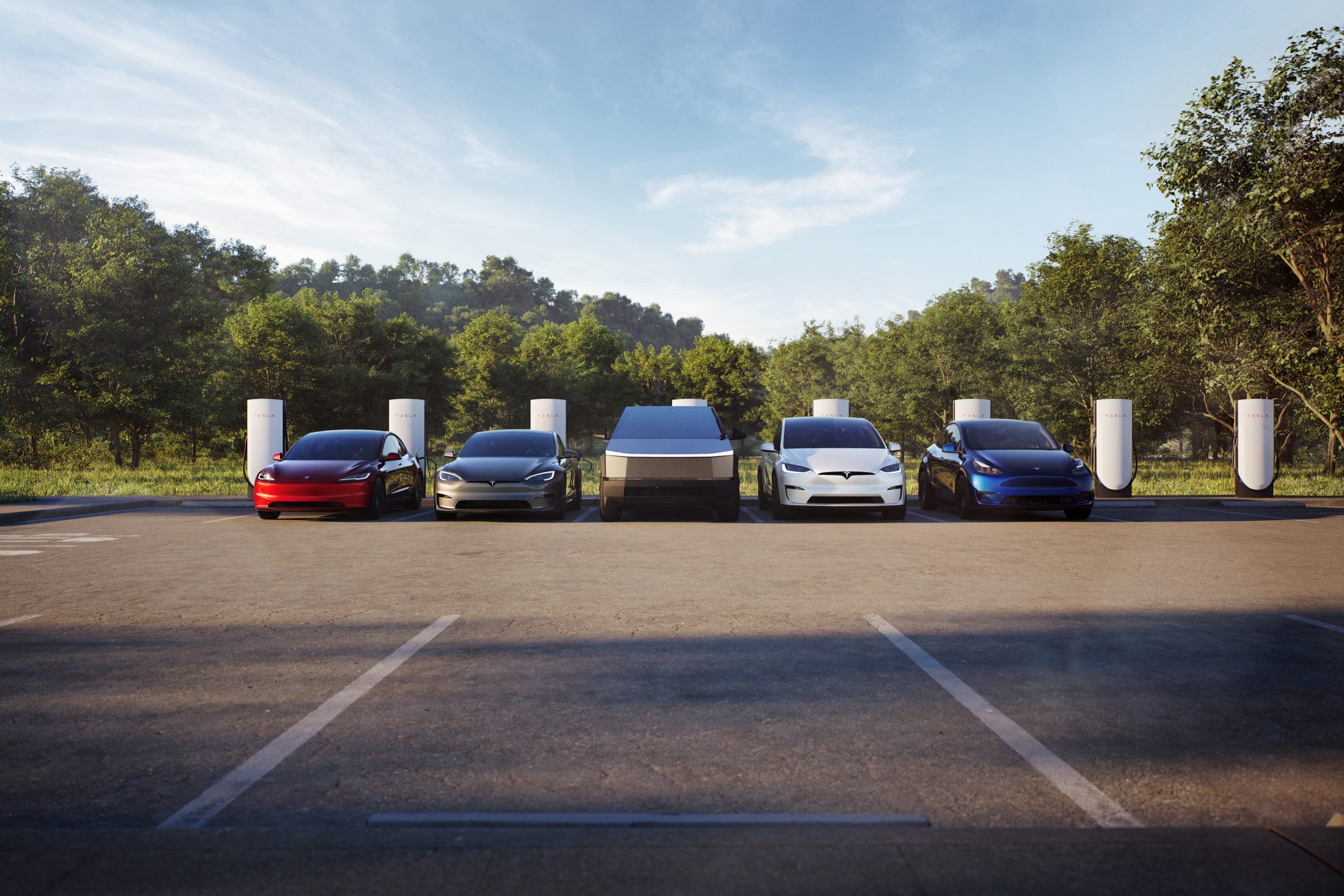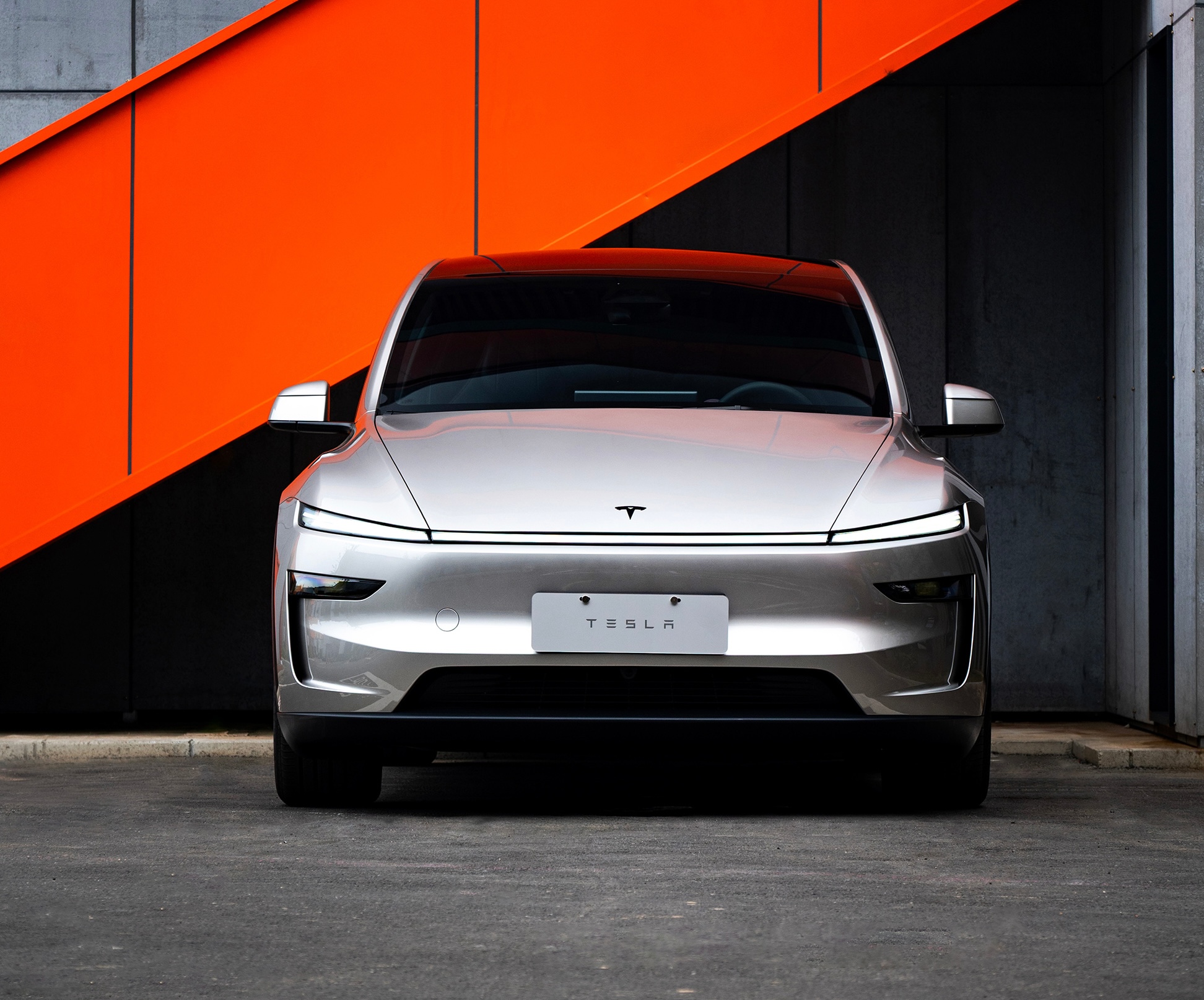News
Tesla ownership without home charging: Here’s how it’s done

I bought a Tesla without having perhaps the biggest advantage of owning an electric vehicle: home charging.
People told me it could be done, others said it eliminated the purpose of owning an EV. I knew I wanted a Tesla, and I knew I could probably get away with not having access to charging at home.
I traded my ICE vehicle for a Tesla Model Y: here’s how it went
The strategy I planned to use without having home charging was pretty simple: there’s a Supercharger a few miles away, and there’s also low-level charging at my local grocery store. The Model Y also came with a Mobile Connector, so there was another way I could charge in a pinch.
There are also some distinct advantages I have over others, including the fact that I do not commute to and from work, and I’m also situated only a handful of miles from things like the store and shopping, and most of my errands can be completed without driving more than 15 miles back and forth.
A common misconception about being reliant on Supercharging is the cost. Many believe that Supercharging is so expensive that it costs about the same as buying gas.
However, there are many workarounds for that, some of which I have used weekly to save money and increase convenience.
Here’s how I’ve made it work, and how I suggest you can too:
Charge During Off-Peak Hours as Much as Possible
The biggest tip I have for those who choose to buy an EV but do not have access to at-home charging is the advantage that is off-peak rates.
At my local Supercharger, it costs $0.47 from 8 a.m. to 10 p.m., and just $0.18 from 10 p.m. to 8 a.m.
That means if you can wake up a little earlier or go to bed a little bit later, you’ll save nearly three times the money. This is not to say that I never charge during peak hours, but I try to save the longer charges for off-peak hours, and it’s been a huge advantage for me.
One morning recently, I was at 9 percent and I charged to 90 percent. It only cost me about $11. Charging during peak hours, that same charge would have been roughly $26.
Tesla Supercharger access has proven to be a challenge for one company
In my Bronco Sport, going from 40 miles to a full tank, roughly 400 miles, would have cost me well over $40.
It’s not so bad either. The Supercharger I use is located at a Sheetz, so I’m able to go in, grab a coffee and a breakfast sandwich, charge, watch YouTube in the car, and sometimes, I even get to enjoy a nice sunrise on the way home.
Friday mornings are sacred:
✅BEC on a bagel from Sheetz
✅early AM supercharging rates
✅Bob does sports @sheetz @tesla @RobbyBerger pic.twitter.com/hu5iemAgEd— Joey Klender (@KlenderJoey) September 26, 2025
If I have to go at night, my Fiancè and I usually use the opportunity to spend time together. We’ll run over to the Supercharger, grab snacks, and watch whatever we’re binging on Netflix (right now, it’s Narcos).
Many people said that Supercharging would cost me more than filling up my gas car. According to my Tesla app, that simply isn’t the case.
While I have been forced to charge during peak hours at times for about a month and a half, in about fifteen charging sessions, I’ve saved about $70. Over the course of a year, that would equate to over $800.

Utilize Other Charging Solutions
Although my Charging Stats above show that I’ve only used it 1 percent of the time, I have the advantage of free charging at my grocery store.
It is a Shell Recharge EV charging station, and there are two of them at the store. I used my J1772 adapter to charge, and it charges slowly at 11.5 kW.
However, it is great if you’re doing your shopping for the week and you’re stuck at the store for an hour or two. If you have one or two of these at your grocery store, just remember to be courteous and charge until you have a reasonable amount of range.
What I’ll Do Moving Forward
One ongoing effort has been pushing my leasing office to install a few EV chargers in our neighborhood. Because we rent, we are truly at the mercy of what the leasing office will allow and what they’ll do to make the lives of EV owners easier.
I’m hoping to continue pushing the management company to a point that will eventually get EV chargers in the neighborhood, especially while I live here and for those who will live here after we leave.

Investor's Corner
Tesla gets bold Robotaxi prediction from Wall Street firm
Last week, Andrew Percoco took over Tesla analysis for Morgan Stanley from Adam Jonas, who covered the stock for years. Percoco seems to be less optimistic and bullish on Tesla shares, while still being fair and balanced in his analysis.

Tesla (NASDAQ: TSLA) received a bold Robotaxi prediction from Morgan Stanley, which anticipates a dramatic increase in the size of the company’s autonomous ride-hailing suite in the coming years.
Last week, Andrew Percoco took over Tesla analysis for Morgan Stanley from Adam Jonas, who covered the stock for years. Percoco seems to be less optimistic and bullish on Tesla shares, while still being fair and balanced in his analysis.
Percoco dug into the Robotaxi fleet and its expansion in the coming years in his latest note, released on Tuesday. The firm expects Tesla to increase the Robotaxi fleet size to 1,000 vehicles in 2026. However, that’s small-scale compared to what they expect from Tesla in a decade.
Tesla expands Robotaxi app access once again, this time on a global scale
By 2035, Morgan Stanley believes there will be one million Robotaxis on the road across multiple cities, a major jump and a considerable fleet size. We assume this means the fleet of vehicles Tesla will operate internally, and not including passenger-owned vehicles that could be added through software updates.
He also listed three specific catalysts that investors should pay attention to, as these will represent the company being on track to achieve its Robotaxi dreams:
- Opening Robotaxi to the public without a Safety Monitor. Timing is unclear, but it appears that Tesla is getting closer by the day.
- Improvement in safety metrics without the Safety Monitor. Tesla’s ability to improve its safety metrics as it scales miles driven without the Safety Monitor is imperative as it looks to scale in new states and cities in 2026.
- Cybercab start of production, targeted for April 2026. Tesla’s Cybercab is a purpose-built vehicle (no steering wheel or pedals, only two seats) that is expected to be produced through its state-of-the-art unboxed manufacturing process, offering further cost reductions and thus accelerating adoption over time.
Robotaxi stands to be one of Tesla’s most significant revenue contributors, especially as the company plans to continue expanding its ride-hailing service across the world in the coming years.
Its current deployment strategy is controlled and conservative to avoid any drastic and potentially program-ruining incidents.
So far, the program, which is active in Austin and the California Bay Area, has been widely successful.
News
Tesla Model Y L is gaining momentum in China’s premium segment
This suggests that the addition of the Model Y L to Tesla China’s lineup will not result in a case of cannibalization, but a possible case of “premiumization” instead.

Tesla’s domestic sales in China held steady in November with around 73,000 units delivered, but a closer look at the Model Y L’s numbers hints at an emerging shift towards pricier variants that could very well be boosting average selling prices and margins.
This suggests that the addition of the Model Y L to Tesla China’s lineup will not result in a case of cannibalization, but a possible case of “premiumization” instead.
Tesla China’s November domestic numbers
Data from the a Passenger Car Association (CPCA) indicated that Tesla China saw domestic deliveries of about 73,000 vehicles in November 2025. This number included 34,000 standard Model Y units, 26,000 Model 3 units, and 13,000 Model Y L units, as per industry watchers.
This means that the Model Y L accounted for roughly 27% of Tesla China’s total Model Y sales, despite the variant carrying a ~28% premium over the base RWD Model Y that is estimated to have dominated last year’s mix.
As per industry watcher @TSLAFanMtl, this suggests that Tesla China’s sales have moved towards more premium variants this year. Thus, direct year-over-year sales comparisons might miss the bigger picture. This is true even for the regular Model Y, as another premium trim, the Long Range RWD variant, was also added to the lineup this 2025.
November 2025 momentum
While Tesla China’s overall sales this year have seen challenges, the Model Y and Model 3 have remained strong sellers in the country. This is especially impressive as the Model Y and Model 3 are premium-priced vehicles, and they compete in the world’s most competitive electric vehicle market. Tesla China is also yet to roll out the latest capabilities of FSD in China, which means that its vehicles in the country could not tap into their latest capabilities yet.
Aggregated results from November suggest that the Tesla Model Y took the crown as China’s #1 best-selling SUV during the month, with roughly 34,000 deliveries. With the Model Y L, this number is even higher. The Tesla Model 3 also had a stellar month, seeing 25,700 deliveries during November 2025.
Cybertruck
Tesla Cybertruck earns IIHS Top Safety Pick+ award
To commemorate the accolade, the official Cybertruck account celebrated the milestone on X.

The Tesla Cybertruck has achieved the Insurance Institute for Highway Safety’s (IIHS) highest honor, earning a Top Safety Pick+ rating for 2025 models built after April 2025.
The full-size electric pickup truck’s safety rating is partly due to the vehicle’s strong performance in updated crash tests, superior front crash prevention, and effective headlights, among other factors. To commemorate the accolade, the official Cybertruck account celebrated the milestone on X.
Cybertruck’s IIHS rating
As per the IIHS, beginning with 2025 Cybertruck models built after April 2025, changes were made to the front underbody structure and footwell to improve occupant safety in driver-side and passenger-side small overlap front crashes. The moderate overlap front test earned a good rating, and the updated side impact test also received stellar marks.
The Cybertruck’s front crash prevention earned a good rating in pedestrian scenarios, with the standard Collision Avoidance Assist avoiding collisions in day and night tests across child, adult crossing, and parallel paths. Headlights with high-beam assist compensated for limitations, contributing to the top award.
Safest and most autonomous pickup
The Cybertruck is one of only two full-size pickups to receive the IIHS’ Top Safety Pick + rating. It is also the only one equipped with advanced self-driving features via Tesla’s Full Self-Driving (Supervised) system. Thanks to FSD, the Cybertruck can navigate inner city streets and highways on its own with minimal supervision, adding a layer of safety beyond passive crash protection.
Community reactions poured in, with users praising the vehicle’s safety rating amidst skepticism from critics. Tesla itself highlighted this by starting its X post with a short clip of a Cybertruck critic who predicted that the vehicle will likely not pass safety tests. The only question now is, of course, if the vehicle’s Top Safety Pick+ rating from the IIHS will help the Cybertruck improve its sales.








